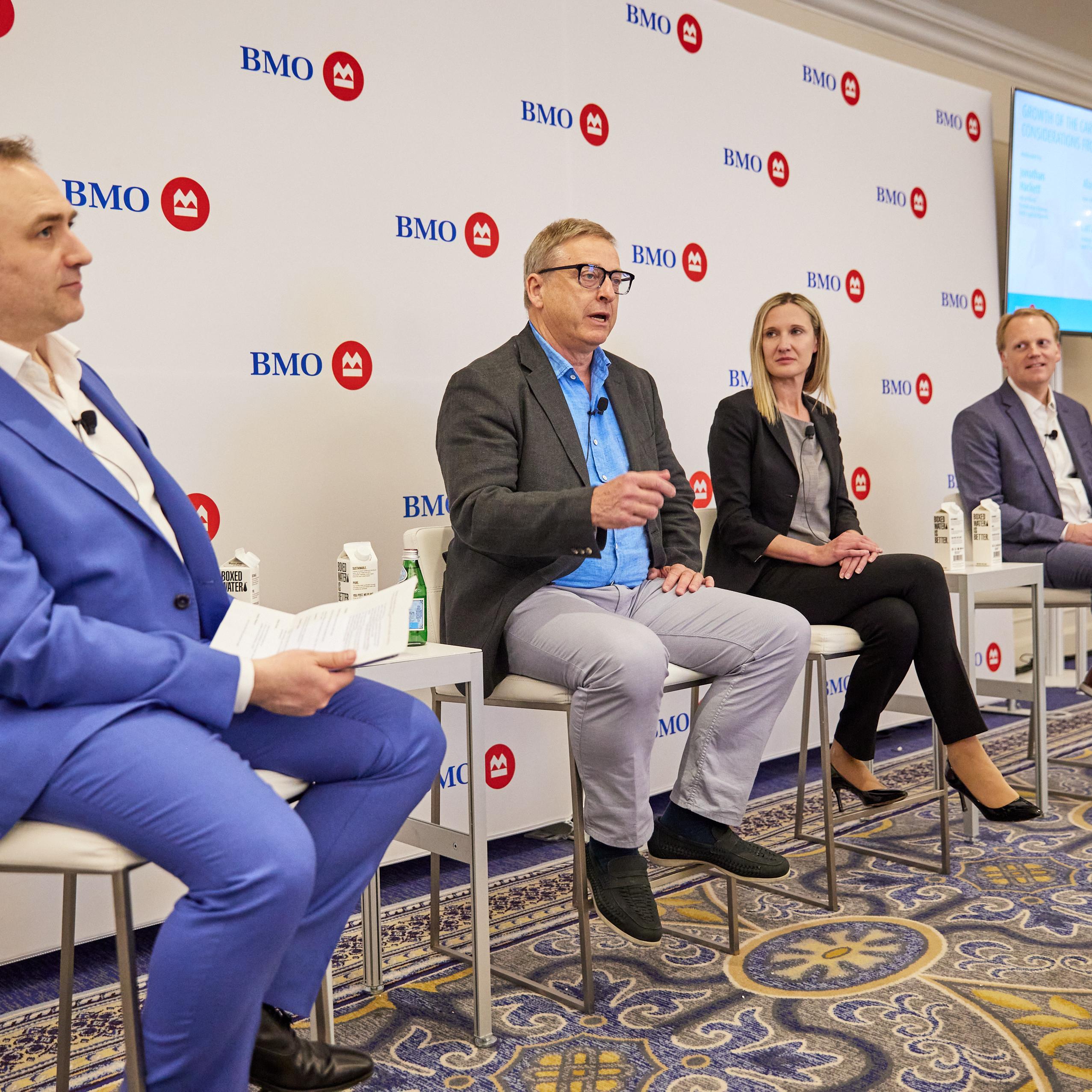Growth of the Carbon Market: Considerations from Key Stakeholders
With the global compliance carbon market worth more than US$900 billion and the voluntary market forecasted to reach as much as $40 billion by 2030, there’s no shortage of opportunities in the market for trading carbon credits. This was a key takeaway behind the Growth of the Carbon Market – Considerations from Key Stakeholders panel at the BMO Capital Markets 18th annual Farm to Market Conference in New York.
The panel led by Jonathan Hackett, Co-Head, BMO Energy Transition and Head, Sustainable Finance, provided an overview of the carbon markets, including how to make carbon credits more tangible and investible, and featured Alastair Handley, Special Advisor & Founder Emeritus, BMO Radicle; Andrea Gruza, Managing Partner, Bonnefield Financial; and Cameron Wallace, Strategic Operating Director, Land O'Lakes (Truterra).
Assessing the Opportunities
At a basic level, organizations that are making the effort to reduce greenhouse gas emissions or pull greenhouse gases out of the atmosphere in a way that can be verified to meet certain standards can create carbon credits. To create the carbon credit, the activity needs to be developed under an approved methodology, verified by a third party, and uniquely serialized on a registry. Ultimately, that serialized credit will be sold to an emitter that will retire the credit to offset their emissions.
As Handley explained, carbon credits are used as incentives in carbon-producing industries like mining. But he also noted that carbon credits are often “misaligned and misunderstood,” which is why he said companies need to understand the cost, revenue opportunities and risks involved in carbon credit opportunities.
“When we think about carbon credit opportunities back when we started (BMO) Radicle, it was pretty simple,” Handley said. “There was a market, there was a clear price signal, there were clear opportunities to create credits, and real clarity in what we needed to do to generate those credits. Then that expanded [from primary agriculture] into the oil and gas sector, renewable energy, forestry and regenerative agriculture. But within all of those, we saw a clear path to revenue with a high degree of certainty.”
Now, as the market has expanded, many industries find themselves on the leading edge of carbon credit development. With that comes an active debate on the best mechanisms to reduce carbon emissions. “There are certain ways to develop credits today depending on what jurisdiction you're in where it's very clear as to what you need to do to create those credits, and there are very clear price signals,” Handley said. “There are other markets that are emerging where it’s less clear. Like anything else from a business perspective, it’s about understanding the cost, the revenue opportunity, and the risk.”
The Canadian agriculture industry is a case in point, Gruza said. Bonnefield Financial holds about 1.4 billion of Canadian farmland assets, which it invests in on behalf of institutional investors such as pension funds. But Gruza pointed out that agricultural carbon credit trading is difficult because Canada doesn’t currently have a federal program in place.
“Land-based credits are more likely in terms of conservation, biodiversity, or planting trees, as opposed to changing farming practices,” she said. "That's a bit of the problem because a lot of Canadian farmers should be credited for the really good practices they have. It's a combination of the fact that the market is nascent, and the technology is difficult to be able to monitor it. Once we crack those two things, the farming practices are really going to drive credit generation.”
A New Scope
When it comes to how companies are generating and investing in carbon credits within the value chain, Handley said the focus is largely on Scope 3 value chain interventions. That is, how companies are encouraging change within their supply chains.
"If a company is trying to lower its Scope 3 emissions—through the production of a grain product they make, for example—they may go to a farm and say, we want you to undertake this activity and we're going to help you pay for cover crops. They're going to quantify what the associated emission reductions or removal are, and they're going to claim those as a reduction in their supply chain. It's not a credit, per se, but it is an emissions reduction or removal that has a tangible value that's applied through that intervention.”
That’s what Bonnefield Financial advises its clients to focus on. Gruza said that while the institutional investors Bonnefield Financial works with are committed to net zero, they may not know how to approach the market. “We talked to some investors who are thinking about speculating in the carbon markets; they just want to get as much exposure as they can to these credits because they think that the price is going to take off. But I'd say it really is more of the Scope 3 value chain intervention because they need to know their portfolio of investments are not carbon emitters.”
The quality of carbon credits is also a key factor. Truterra works with farmers and dairy producers to help them adopt regenerative farming practices. It also helps food companies address their sustainability commitments. Wallace said generating high-quality credits in agriculture requires two key elements.
“You need some assurance that the practice is going to continue over time because agriculture credits are competing with credits from other engineered solutions, some of which have much longer durability guarantees,” Wallace said.
The second element is technical support for farmers. “It needs to have an agronomic, economic and environmental benefit,” Wallace said. “If it only has an environmental benefit, then it's not going to be sustainable because farmers need it to benefit their yield and profitability. If we can find a way to bring those things together, then you'll start to see more scalable solutions.”
The Road to 2030
Meeting the U.S. ambitious emissions reduction goals over the next seven years will be a huge undertaking. The opportunity for carbon markets touches every part of the food supply chain. While the opportunity is immense, so is the sense of urgency.
“We're seven years away from 2030, but that means companies have probably two or three years to figure it out,” Wallace said. “It takes a long time to have these conversations with farmers and get them to change practices and then to do all the work to turn that into a credit. Then you have to consider that a lot of companies are going to miss those targets. Then what happens to those companies? That's going to be a real test. There's a massive area of opportunity, but I think that there needs to be a greater sense of urgency for taking action.”
That urgency comes with a cost. As Handley pointed out, the transition to net zero is estimated to cost $130 trillion by 2050. But not meeting these commitments could prove even more costly.
“People are starting to hold companies accountable,” Handley said. “These carbon commitments are becoming more and more meaningful in the sense that they're going to carry more risk for companies that don't actually make their commitments. That's because you've got groups that are becoming much more active as shareholders in those companies. There's a potentially big financial hammer that will come, and then the regulatory hammer as well.”
Growth of the Carbon Market: Considerations from Key Stakeholders
Jonathan Hackett
|
June 01, 2023
|
Food, Consumer & Retail,
Sustainable Finance


























